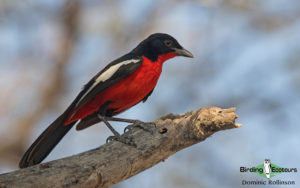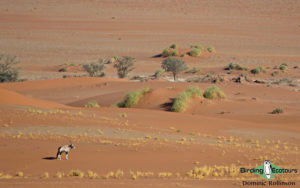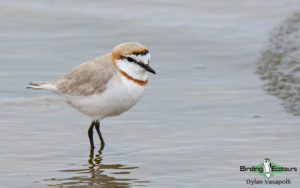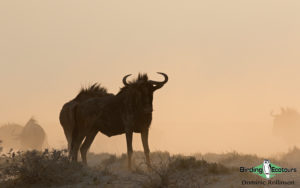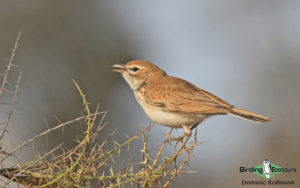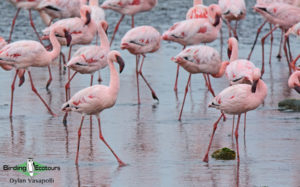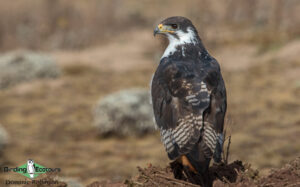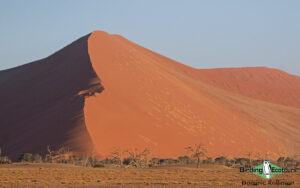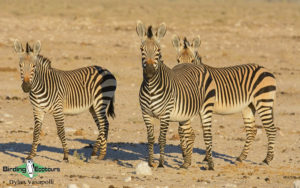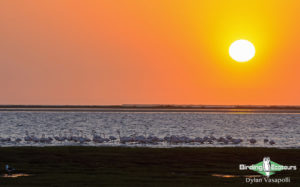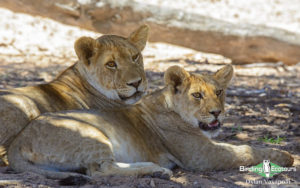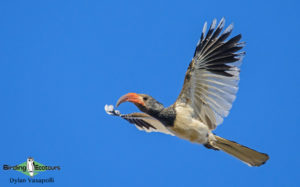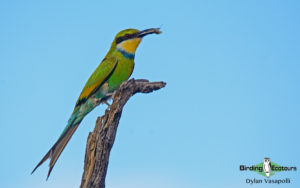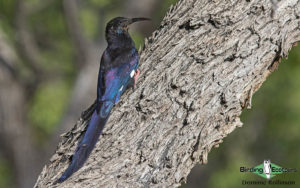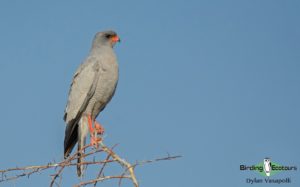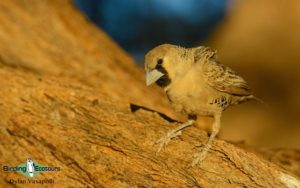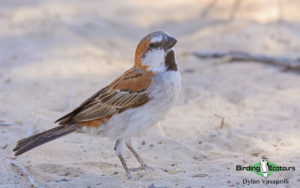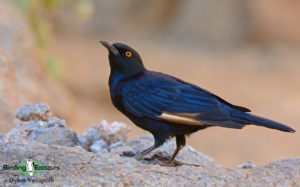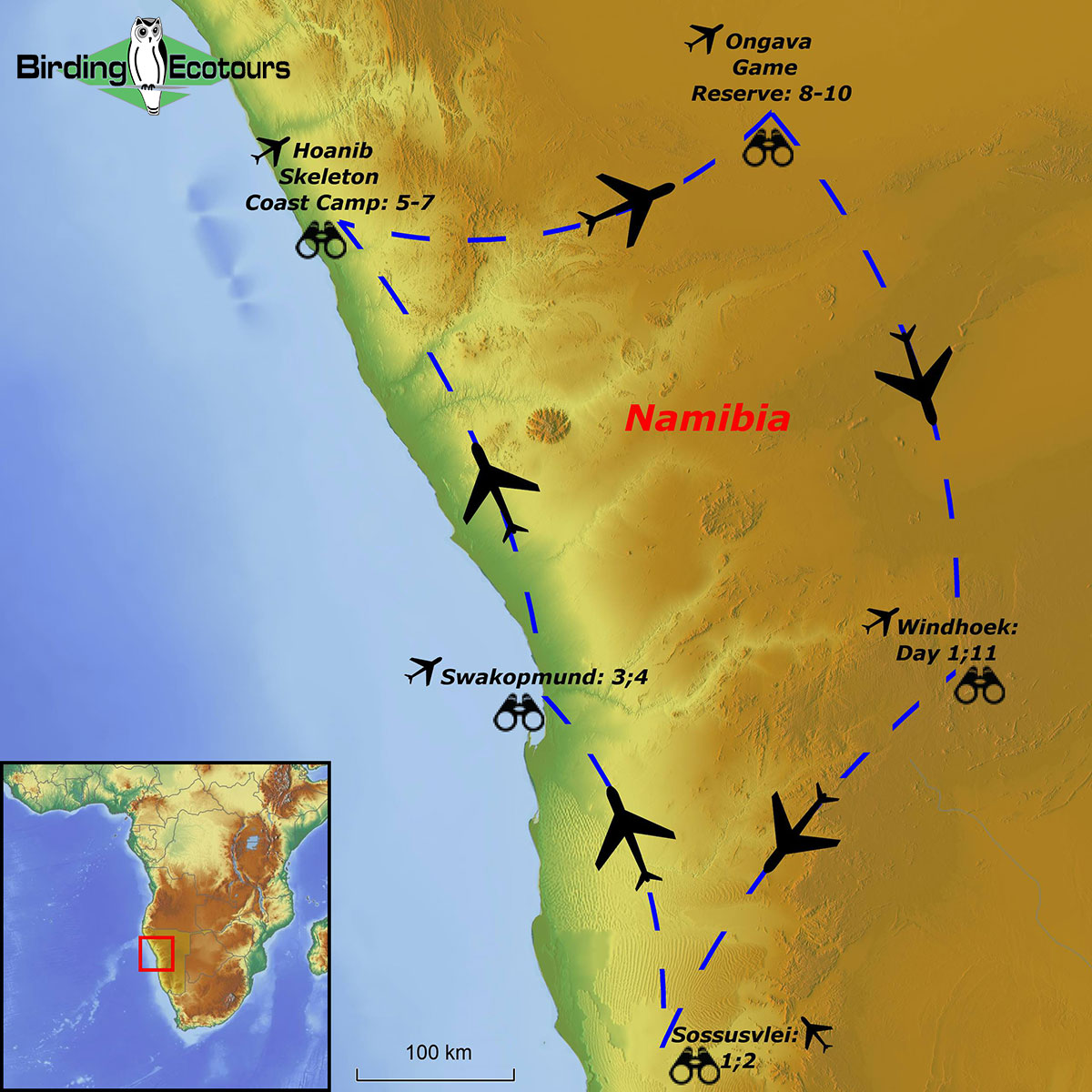Quintessential Namibia Birding and Wildlife Photo Tour
Quintessential Namibia Birding and Wildlife Photo Tour
September 2025
Experience the Namib in all its splendor – the oldest desert in the world with towering red dunes. The essence of Namibia is encapsulated in this wondrous photographic exploration, which takes in all the ‘must-dos’, namely Sossusvlei, the Skeleton Coast, and the game-filled plains and waterholes of Etosha National Park.
The ideal experience, and one we boldly strive for, is to combine visiting the world’s remaining wilderness areas with that of special-interest wildlife photography. Our photographic guides are all highly qualified naturalists and experienced photographers themselves, and we specialize in birds, mammals, and of course the unique landscapes and cultures experienced along the way. Key to getting exceptional images is an intimate knowledge of wildlife subjects and their behavior, and our guides will go that extra mile for you to get that perfect shot. That said, the wildlife is never put under any undue stress and will be respected at all times.
Lesser Flamingos should entertain us on the coast.
All photo tours are uniquely crafted to maximize wildlife viewing opportunities but will also be an excellent learning experience, catering for photographic participants of all skill levels.
This Quintessential Namibia **SQ TOUR** is not your typical Birding Ecotours offering. It rather is an example of an exciting new line of ultimate photographic journeys to the planet’s most unspoiled wilderness areas. Everything on these tours is of an exceptional standard – from the birding and wildlife photographic opportunities to flying over amazing landscapes by light aircraft to the luxurious safari camps themselves. Due to the specialized nature of these tours please email us for a ‘seasonal quotation’.
This Quintessential Namibia Birding and Wildlife Photo Tour can be combined with our preceding Kenya Birding and Photo Tour. This tour will offer a host of new bird and wildlife photographic opportunities in an entirely different environment. Our similar, yet sufficiently different Namibia and Botswana Birding and Photo Tour directly follows this high-end offering – taking in different areas of Namibia with their own unique birds and wildlife, along with combining a visit to the panhandle of the Okavango Delta. And following this, is our South Africa – Western Cape to Kruger Birding and Photo Tour, which is another complimentary tour, offering a whole set of new and unique species with excellent photographic opportunities throughout!
Itinerary (11 days/10 nights)
Days 1 – 2. Little Kulala Camp, Kulala Wilderness Reserve, Sossusvlei
Upon arrival in Windhoek the group will be met by our representative and assisted with the charter flight to our first camp, Little Kulala Camp, for two nights. The camp is located within the arid Namib Desert on the 37,000-hectare private Kulala Wilderness Reserve and close to the iconic dunes of Sossusvlei, by virtue of having a private gate into the park. A waterhole in front of the main building provides the opportunity to see Gemsbok (Southern Oryx), Springbok, Bat-eared Fox, Aardwolf, Common Ostrich, and Black-backed Jackal. Spotted Hyaena can be heard at night. The Namib, a vast sea of red sand dunes, is one of the most arid deserts in the world.
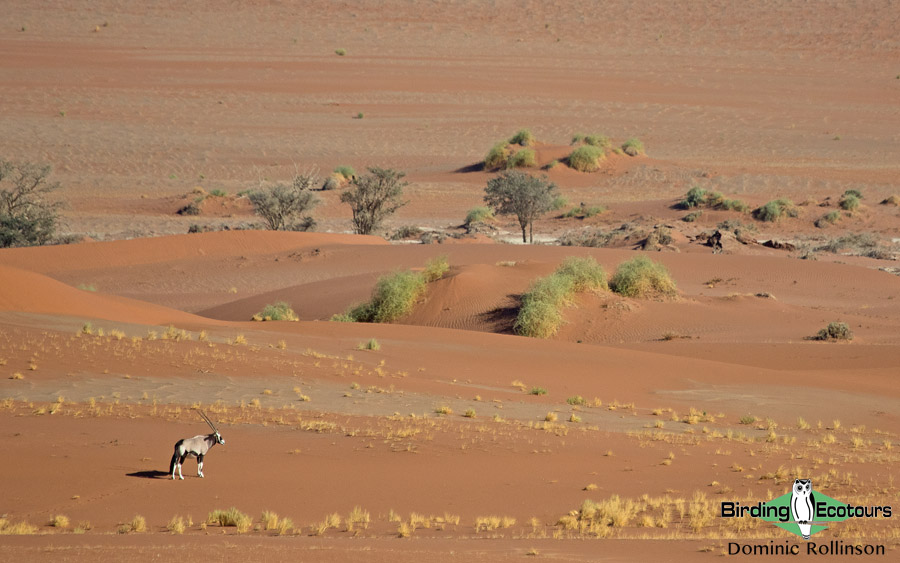
The morning of Day 2 will see us take an early morning excursion into the Sossusvlei section of the Namib-Naukluft National Park and its incredible dunes, which will afford excellent photographic opportunities. The big target bird will be Dune Lark, Namibia’s only endemic, and mammals photographable against a unique dune backdrop could include Cape Fox, Gemsbok, Springbok, and possibly even Cheetah if we are very fortunate. The gravel plains here are also good for species such as Burchell’s Courser, Namaqua Sandgrouse, Greater Kestrel, Grey-backed Sparrow-Lark, Stark’s Lark, and Ludwig’s Bustard. We will enjoy our packed breakfast in the shady Tsauchab River, where we will no doubt be entertained by Dusky Sunbird, Scaly-feathered Weaver, Chestnut-vented Warbler, and White-throated Canary, among others. One can also climb to the top of Dune 45 to obtain another perspective of this fascinating area. Lunch will be enjoyed back at Little Kulala Camp, while in the late afternoon we will be taking in the splendor of Kulala Wilderness Reserve itself on a scenic nature drive.
Little Kulala Camp comprises a reception, lounge, bar, dining room, library, wine cellar, curio shop, and veranda.
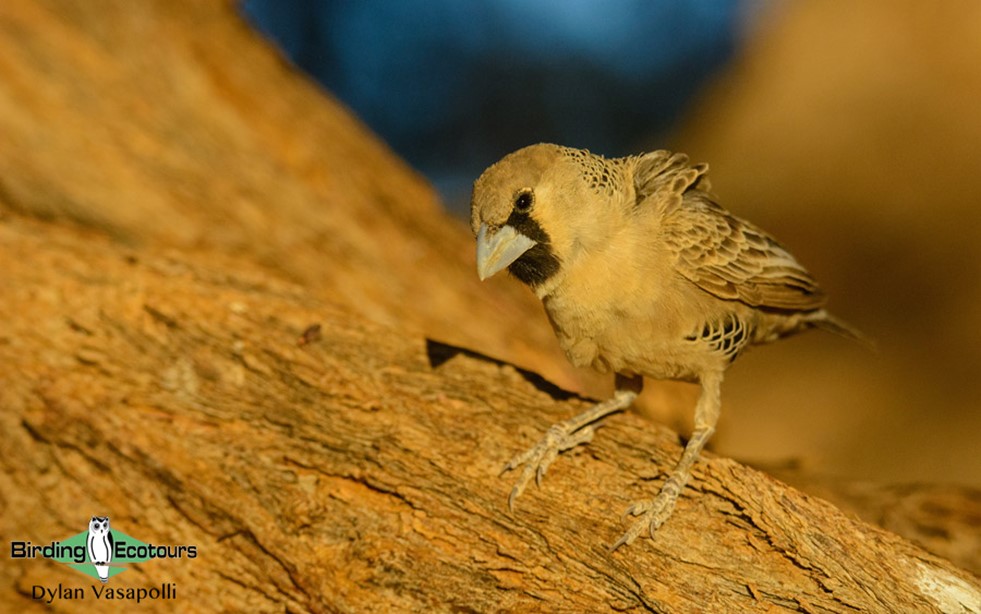
Days 3 – 4. Swakopmund
We depart from Sossusvlei via a highly scenic charter flight over awe-inspiring dunes, rugged topography, and a scenic coastline to Swakopmund, where we will stay for two nights. This flight will afford a wonderful opportunity for aerial photography. Swakopmund is unique for its Bavarian architecture and desolate Atlantic coastline, which affords ample opportunities to put your wide-angle lenses to use in and around town. A visit will also be made to the famous lagoon at Walvis Bay and its saltpans, where large numbers of waterbirds gather, with both Lesser and Greater Flamingos in big numbers. Palearctic waders are also well represented here, including Bar-tailed Godwit, Sanderling, Curlew Sandpiper, Red Knot, Ruddy Turnstone, and Little Stint. Among them should also be Pied Avocet, Black-winged Stilt, and Red-necked Phalarope. Key species to find here include the localized Damara Tern and the pretty Chestnut-banded Plover.
We will overnight at the comfortable Cornerstone Guest House, situated in Swakopmund.
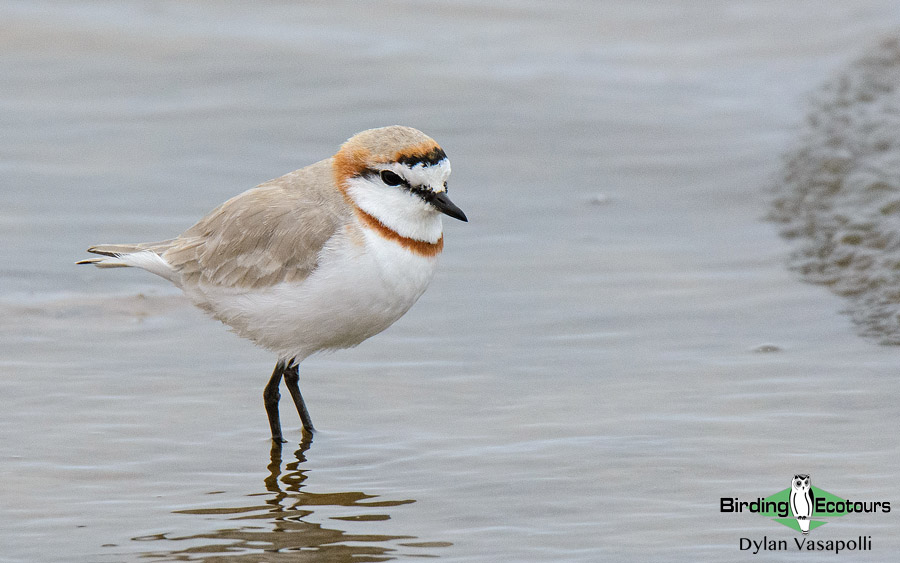
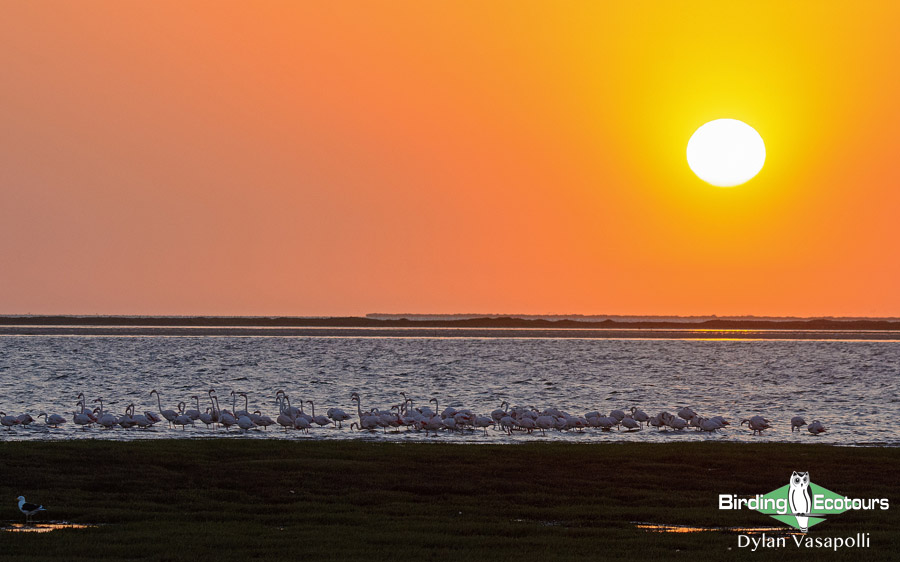
Days 5 – 7. Hoanib Skeleton Coast Camp
Today the group will travel, again by charter flight, from Swakopmund to Hoanib Skeleton Coast Camp for a three-night stay. Flanked to the east and west by rugged hills, the camp looks out over stunning, starkly beautiful scenery. It is scenically located in a broad valley at the confluence of two tributaries of the Hoanib River in the northern part of the private Palmwag Concession. Its location thus straddles the Palmwag area and the iconic Skeleton Coast National Park in one of the most remote areas of the Kaokoveld.
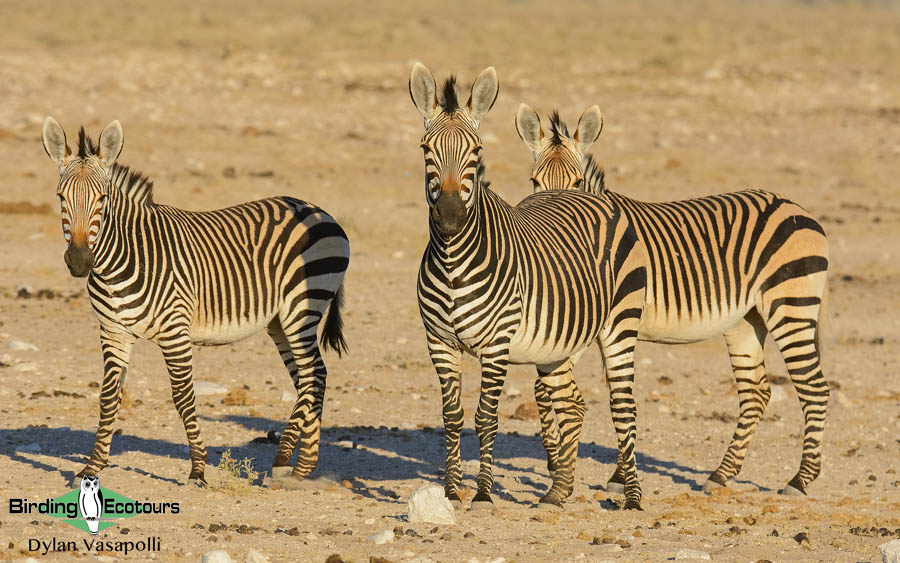
Photographic highlights here include one of the greatest concentrations of desert-adapted African Elephant and Lion, and the renowned Skeleton Coast itself, of course. Nature drives will be taken along the ephemeral Hoanib River as well as to several freshwater springs, which support healthy populations of desert-adapted wildlife such as Hartmann’s Mountain Zebra, Southern Giraffe, Gemsbok, and Springbok. There are also good birding opportunities in this area, including Monteiro’s Hornbill, Rüppell’s Korhaan, Booted Eagle, and Benguela Long-billed Lark, among many others. Another memorable highlight is sure to be the scenic flight over the Skeleton Coast. This full-day excursion showcases the rugged coastline with its seal colonies and shipwrecks. To reach the coast one flies over massive dune fields, the Auses Spring, and the Hoanib floodplains.
The exclusive Hoanib Skeleton Coast Camp is only accessible by light aircraft and consists of only seven twin-bedded tents and one family unit, each comprising stylish en suite bedrooms with shaded outdoors decks. This camp offers guests all the luxuries and amenities for an unforgettable stay.
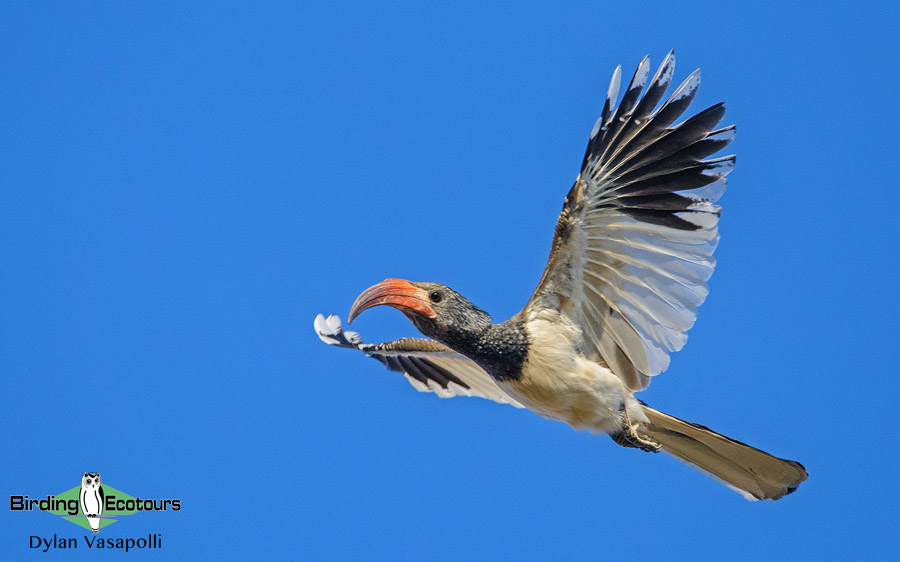
Days 8 – 10. Ongava Tented Camp, Ongava Game Reserve, Etosha National Park
We then transfer to the final camp of our journey, Ongava Tented Camp adjacent to Etosha National Park, for the last three nights. The 30,000-hectare (74,129-acre) private Ongava Game Reserve is found on the southern boundary of Etosha National Park, which is Namibia’s premier wildlife destination; it provides an abundance of game viewing regardless of season. Photographic activities will comprise nature drives on Ongava Game Reserve itself as well as into the game-rich plains of adjoining Etosha National Park with its network of photography-friendly waterholes, which always plays center stage to some sort of wildlife spectacle.
Ongava Game Reserve features almost all of the characteristic wildlife of the area, with plains game such as Springbok, Gemsbok, Common Wildebeest, Plains Zebra, Red Hartebeest, Southern Giraffe, Common Eland, and the endemic Black-faced Impala, while Etosha itself has African Elephant and Black and White Rhinoceros to add to the list. In Etosha large herds of plains game concentrate around the waterholes, making for exciting wildlife viewing. Predators include Lion, Leopard (for the lucky), Spotted Hyaena, and Black-backed Jackal.
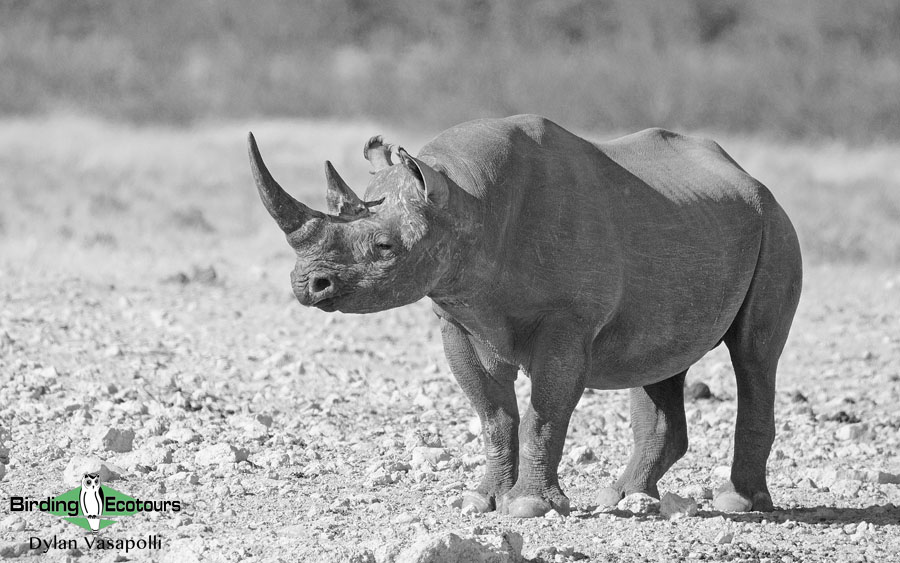
Birdlife within the Ongava Game Reserve is prolific, with over 340 species to be seen. Specials like Short-toed Rock Thrush, Bare-cheeked Babbler, Violet Wood Hoopoe, Carp’s Tit, Hartlaub’s Spurfowl, Red-necked Falcon, White-tailed Shrike, Sociable Weaver with its enormous communal nests, the miniature Pygmy Falcon, and the brilliantly colored Crimson-breasted Shrike are found here. In Etosha National Park, on the open plains towards the Okondeka waterhole, Namaqua Sandgrouse, Double-banded Courser, and Pink-billed Lark can be seen. Acacia thickets harbor Yellow-bellied Eremomela and Acacia Pied Barbet. Others include the immense Kori Bustard and raptors like Greater Kestrel, Lanner Falcon, and Pale Chanting Goshawk in abundance.
We will stay in an intimate safari camp discreetly hidden on Ongava Game Reserve. Intense wildlife sightings in and around the camp are possible thanks to its popular waterhole.
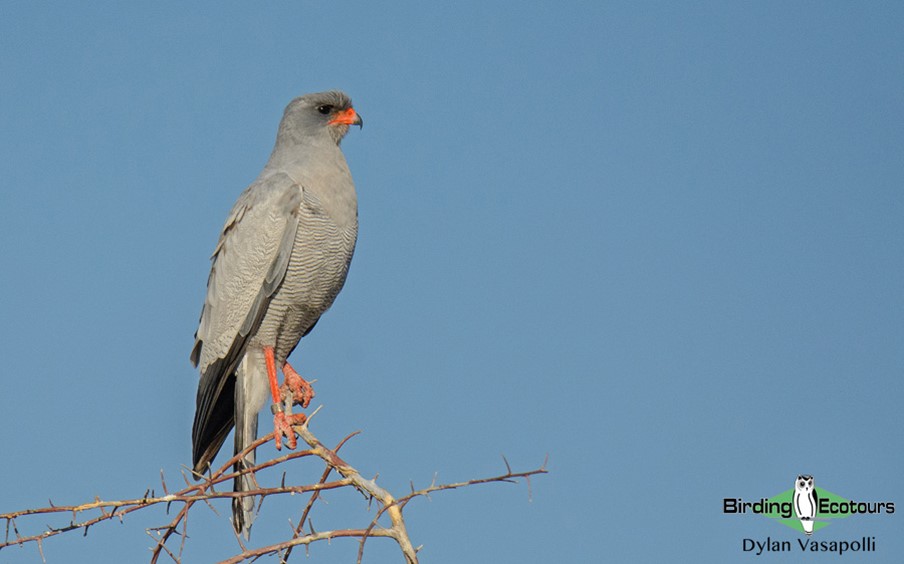
Day 11. Departure
We return to Windhoek, where we then connect for our return flight to Johannesburg to make connecting international flights.
Please note that the itinerary cannot be guaranteed as it is only a rough guide and can be changed (usually slightly) due to factors such as availability of accommodation, updated information on the state of accommodation, roads, or birding sites, the discretion of the guides and other factors. In addition, we sometimes have to use a different international guide from the one advertised due to tour scheduling.
Download Itinerary
